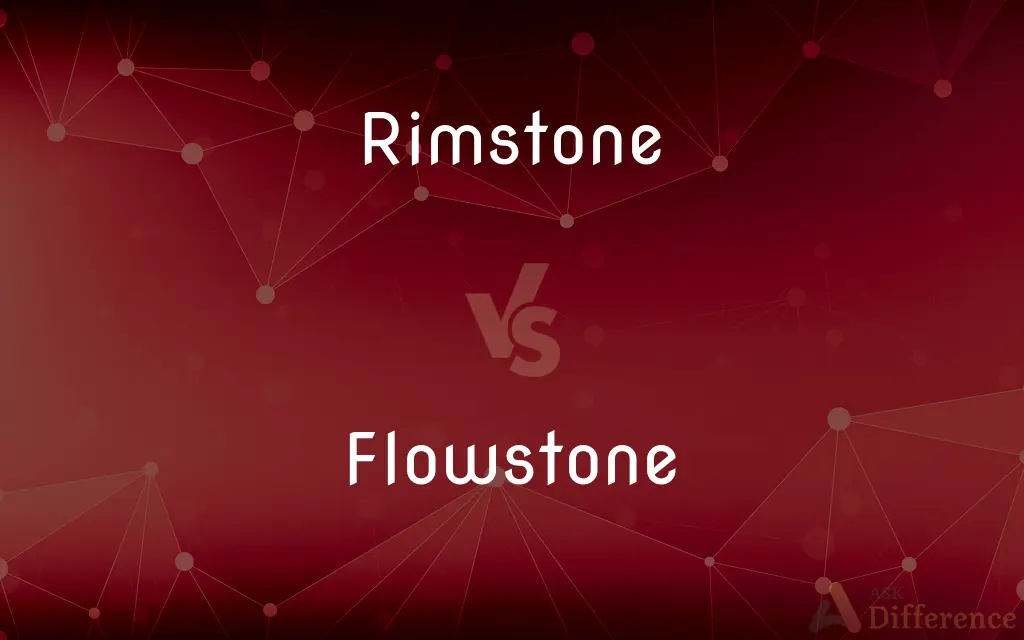Rimstone vs. Flowstone — What's the Difference?

Difference Between Rimstone and Flowstone
ADVERTISEMENT
Compare with Definitions
Rimstone
Rimstone, also called gours, is a type of speleothem (cave formation) in the form of a stone dam. Rimstone is made up of calcite and other minerals that build up in cave pools.
Flowstone
Flowstones are composed of sheetlike deposits of calcite or other carbonate minerals, formed where water flows down the walls or along the floors of a cave. They are typically found in "solution caves", in limestone, where they are the most common speleothem.
Rimstone
A secondary mineral deposit, with a stone-wall-like appearance made up of calcite and other minerals, that builds up to create cave pools.
Flowstone
A layered deposit of calcium carbonate or another mineral, formed by water flowing along the walls or floor of a cave. Also called dripstone.
Flowstone
(geology) A secondary layered mineral deposit of calcite or other mineral, formed by water flowing down the walls and along the floor of a cave.
ADVERTISEMENT
Share Your Discovery

Previous Comparison
Mandatory vs. Mandatary
Next Comparison
Zoom vs. Dolly













































